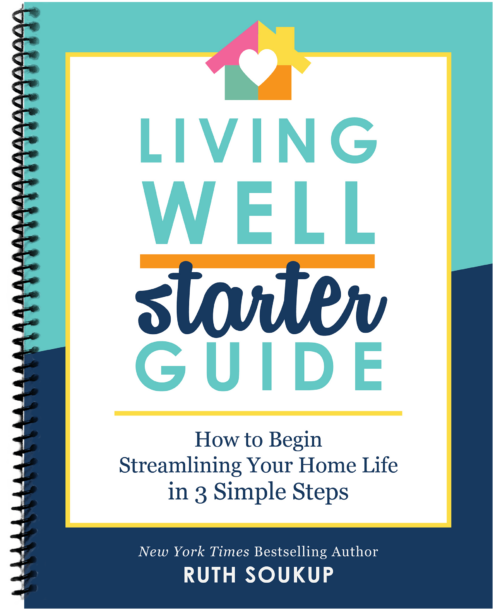Want to know the secrets to saving more money on food? (Spoiler–It’s not always using coupons!) We’ll share how to cut your grocery bill in half.
Let’s face it–food is expensive. The average family spends just over 10% of their household income buying groceries–over $6,000 a year–and even while average wages have gone down, the price of food keeps going up. When you are just trying to feed your family, that is a pretty scary prospect.
That said, as more and more people are beginning to realize, coupons can be a great way to save money on food. If you’ve ever watched TLC’s Extreme Couponing, you probably already know that sometimes those savings can be quite dramatic. The problem is that those dramatic savings often come from seasoned coupon users who have spent countless hours clipping & sorting coupons and searching for the very best deals.
Quite frankly, who has time for that?

A few weeks ago I was asked by the nice people at WINK News to share some tips for saving on groceries. They tagged along as I prepared for one of my own shopping trips, and then as I shopped with Kristen, a single mom of 4 who had never used coupons before and was looking for some practical ways to cut her food budget in half.
For Kristen and probably every other average mom (or dad) who is just trying to save some money on groceries, the idea of all that time and energy on a single shopping trip was not only overwhelming, it was unrealistic. However, as I explained to Kristen, it IS possible to cut your grocery bill in half without spending all your time clipping coupons. In fact, even if you never clip a single coupon, you can still save significant money on your grocery bill just by changing the way that you shop.

Like anything in life, you have to find the right balance. That balance won’t be exactly the same for everyone, but there are 5 tips I shared with both Kristen and WINK that everyone should know:
1. It’s not about the coupons
I’m going to let you in on a little secret that the producers of TLC’s Extreme Couponing (and every food company and grocery store chain out there) don’t really want you to know: Extreme grocery savings do NOT, for the most part, come from the coupons. The bulk of your savings will come from the store sales. The better the promotion, the bigger the savings, so the FIRST step in saving money on your grocery bill is to SHOP THE SALES.
Always, always, always buy food when it is on sale or at its rock bottom price. And by this I mean really on sale, as in 30-50% off the regular price, not one of those “Surprising Low Price” items. (The surprise is that it’s not really on sale!) Compare the store sale ads in your area to find out which stores have the best sale prices, and keep an ongoing price list so that you KNOW when something is a good price.
This does NOT mean that you should buy food just because it is on sale, but instead be on the lookout for sale prices on the food your family normally buys, whether it be all whole foods, organic, or gluten free. Almost everything goes on sale eventually.
Don’t assume you know which store has the best deals until you’ve actually checked–you may be surprised at what you find. Here in Florida, for example, many people assume Publix is the “expensive” store, but when you compare sale ads you will find that Publix consistently has the best sales week after week. Many people also automatically assume that Walmart has the best prices, but most sale prices at a traditional grocery store will beat Walmart’s “everyday low price.” While it has not yet come to my area, I have also heard amazing things about Aldi, so if you are lucky enough to have one in your area, definitely take the time to check it out and compare prices. Because in the end, it is all about the price you pay.
Thus, your goal from now on is to only EVER buy an item when it is at its lowest price. Period.
2. Stockpile, stockpile, stockpile
In order to only ever buy an item at its lowest price, you must buy enough of it while it is on sale to last until it goes on sale again. This is key. Most items go on sale every 6-8 weeks, which means you need to buy enough to last your family that long. If you buy only a weeks worth, you will be forced to pay more the next time you need it because you didn’t buy enough.
Let me make it more clear with an example. Say your family eats 2 boxes of Honey Nut Cheerios every week. The regular price for Honey Nut Cheerios is $4.50 a box, but when you go to the store this week, you see it is on sale for only $1.99 a box–more than 50% off the regular price! Instead of buying only 2 boxes like you normally would for your weekly shopping trip, you buy 12 boxes–enough to last your family for the next 6 weeks at less than half the price you would normally pay.
At first it may seem counterintuitive to be buying more than you normally would instead of less. However, because you are shopping the sales each week, you will be buying a larger quantity of a smaller variety of items, which means your overall grocery bill will still go down. The goal is to build up your own mini-grocery store in your pantry which you can then use to plan your family’s meals.
Remember that a well-varied stockpile does NOT have to take up a whole room of your house, and you do NOT need to accumulate a whole year’s worth of food. Sale cycles generally run about 6-8 weeks, which means your stockpile should contain about 6-8 weeks worth of a nice variety of food. It also means that it will take about 6-8 weeks before you’ve built up a nice varied stockpile and will start to see the most dramatic savings in your grocery bill.
Furthermore, stockpiling does not mean your family has to only eat a diet of processed food. There are plenty of healthy options for stockpiling, including beans, rice, whole grain pastas, whole grain cereals, frozen vegetables, cheese & other dairy products, canned tomatoes, & more.
3. Eat less meat
Going vegetarian just a couple times a week could save you as much as $1,000 a year. Meat costs usually account for a significant portion of people’s grocery bills, so cutting out even a little will make a big difference over time. One of the ways my own family has kept our grocery bill to around $200-300 a month is by eating very little meat and honestly I am shocked at the prices whenever I do buy meat!
I have personally been a vegetarian for almost twenty years, which makes it a little easier for me to come up with creative meat-free meals. However, since the rest of my family is NOT vegetarian, I do make an effort to cook meatless meals that even my meat-loving husband and kids can enjoy.
Here are some of our favorite family-friendly meat-free recipes:
- Loaded Cream of Potato Soup
- Skinny Shepherd’s Pie
- Butternut Squash Lasagna
- Roasted Veggie Cupcakes
- Easy Eggplant Parmesan
- Fresh Lemon & Sage Veggie Pasta
- 30 Minute Black Bean & Corn Chili
- Best Ever Homemade Mac & Cheese
- Quick & Easy Taco Casserole
- Creamy Dill Vegetable Soup
- Quick & Easy Vegetable Quiche
- Easy Broccoli Cheese Soup
- Easy White Bean Chili
- Easy American Goulash
- One Pot Pasta With Feta
- “Meaty” Vegetarian Lasagna
- Easy Vegetarian Meatloaf
- Black Beans & Coconut Rice
I realize that not everyone wants to become a vegetarian, so when you do buy your chicken, beef, or pork, remember to stick to the principles above–buy only what is on sale, and stock up if it is a great deal. Be sure to also check out these ideas for more great ways to save on meat.
4. Change the way you meal plan
If you normally wing it when it comes to meal planning, running to the store several times a week for last-minute dinner items, this step won’t be as painful as you might think. Instead of running to the store for your dinner supplies you’ll be able to run to your stockpile–a ready-made grocery store right in your own home. You may even find that maintaining a nice, varied stockpile by shopping the sales once a week saves you a whole lot of time, in addition to saving you from the expensive impulse and last-minute buys.
For those of you who normally plan your meals then make your shopping list based on that plan, this adjustment may be a little harder. However, you can still make it work if you get into the habit of planning your meals around what’s on sale and around what items you already have on hand in your stockpile. By minimizing the number of non-sale items you need to buy each week you will find that you can plan your meals in advance and still cut your grocery bill in half.
One great meal-planning resource that I have been really impressed with E-Meals. For as little as $5 a month you can receive a customized weekly meal plan based on your own store’s weekly sale ad. The simple recipes are delicious and family friendly, and although the service isn’t free, it does take a lot of the stress out of trying to plan meals around what’s on sale. They even have a great new app that allows you to get your shopping list, meal plan, & recipes right on your phone or tablet. You can also try it for FREE for two weeks!
5. Learn to match coupons to store sales
It is not by accident that using coupons is the last item on this list and not the first. Coupons can and do save you a ton of money on your grocery bill, but only if you follow these other steps first. When and if you make these changes in the way you shop–getting into the habit of shopping for only what’s on sale, buying enough to last your family 6-8 weeks, eating less meat, and planning your meals around your stockpile and what’s on sale–you will see a dramatic drop in your grocery bill, even without clipping a single coupon.
When you begin to match coupons to the things that are already on sale you will see savings that are even more dramatic–50 to 60% off your grocery bill or more! Doing this consistently, week after week, you can literally cut your grocery bill in half.
Learning to match coupons to store sales is not nearly as confusing or intimidating as it might sound. Two years ago I wrote a very easy-to-follow 8 week series called The Beginner’s Guide to Coupons that has since taught thousands of people how to do it, from the very first step of just getting started to making your first shopping list to building a stockpile. It breaks down the whole process into manageable “baby steps,” complete with assignments to get you going, and it is completely free.
One of the most common complaints I hear about coupons is that they are all for unhealthy processed food. While this is to some degree true, there ARE coupons available for healthier food options too. There are almost always coupons available for things like yogurt, cheese, soy or almond milk, frozen vegetables, oatmeal, coffee & tea, gluten-free foods, cereal, and basic pantry staples such as pasta, canned tomatoes, and rice. There are also plenty of coupons available for non-food items such as shampoo, toilet paper, paper towels, cleaning supplies, and over-the-counter medicine.
The important thing to remember is that coupons come last, not first. Don’t buy something just because you have a coupon–manufacturer’s count on that! Wait for the sale, then use the coupon. Changing old patterns and shopping habits is never easy, but with these simple changes you really can cut your grocery bill in half.
Just think of what you could do with an extra $75 a week!
You may also love:
- 15 Things to Buy at ALDI (& Five to Avoid)
- 15 Things to Buy at Trader Joe’s (and 5 to Avoid)
- 10 Essential Pantry Staples to Always Keep on Hand
If you love this resource, be sure to check out our digital library of helpful tools and resources for cleaning faster, taking control of your budget, organizing your schedule, and getting food on the table easier than ever before.

Click here to get full access to our End of an Era Final Chance Bundle now!
Pin for Later:
TAKE BACK CONTROL OF YOUR HOME LIFE
 Ever feel like you just can't keep up? Our Living Well Starter Guide will show you how to start streamlining your life in just 3 simple steps. It's a game changer--get it free for a limited time!
Ever feel like you just can't keep up? Our Living Well Starter Guide will show you how to start streamlining your life in just 3 simple steps. It's a game changer--get it free for a limited time!













also a great way to cut down cost is to just cut out the “convieniece stuff. people with kids, if you bag lunch don’t buy pre-packed items, i/e buy that family size bag of godfish and portion out half-cups in ziplock bags for pennies a bag (this is great when it’s your week to bring snacks to class).
also buy in season fruits and veggies, (out of season markup on berries is a real $ drainer) and shop farmer’s markets there are always great deals to be made when dealing with people one on one.
buy bock cheese when it is on sale and shred it yourself, again portion out in ziplock bags. this one is a surprizing $ saver.
buying bulk and doing portion control is a great way to save tons on a whole bunch of things.
I have done a lot of research on buying chips in individual bags versus the family size and I always come out cheaper on the individual. The big bags always have waste at the bottom, and also the amounts are more monitored with the individual. I am talking about when you have teenagers. I do sales and coupons, but with a family of 6 we still spend $600+ a month on grocery’s. We do a lot of social which adds to the cost. This is a great site! Thanks for all the good ideas!!
Whoa. Whoa. Whoa. Thank you so much. This was easy to understand and totally makes sense. I will definitely be following these steps and checking out the beginner coupon clipping series. I can’t thank you enough!
The only thing I take exception to here is that if you are cutting out meat to save money, you’re losing it on the fake ground beef stuff. At least here in Canada, these products cost as much or more per pound than the ground beef it is replacing. Otherwise, you are spot on!! As a mom with 9 children, it just about kills me to pay full price for anything…..ever!!! 😀
i completely understand that part of cutting meat. as a hispanic we always incorporate beans of all kinds to make-up the “meat” in recipes when we couldn’t afford it. (my mom grew up very poor with 12 brothers and sisters) also just cutting back the meat instead of cutting it completely out is another way to save some money, if a recipe calls for 1lb of beef cut it to 1/2 lb and include a bean or other protein. (beans in bulk last a long time and are much cheaper) also soups that are primarily veggies help and then the beef/chicken is just more of a flavor enhancer.
So true a sugestion,when you cook hamburgers ,take your thumb and put and indenting of your thumb on the top of your hamburgers and they won’t drink as much I know it sounds silly but it works, and I ground alot of meat too add too foods makes it go at further in meals
Here in Australia we don’t have a coupon system, we rely on specials only. I also agree that cooking from scratch saves a lot of money and I get more satisfaction from it as well. After rent and utilities are paid we have 400 a month for groceries, fuel, insurances, entertainment and clothing, So yes we all need to pinch our pennies.
Yes I agree one way I found too st reach meat out and make it go further it too ground it,like if you have some stripes of meat too put in stir fry vegatables,ground your meat ,you can chop it then put it in your chopper then cook ad normally wood too add too veg ,and put over fried Frick and eggs ,and you end up with so much food you can even freeze some for. Later when not feeling like cooking ,because meat is so exspencive but with chopping it up it goes alot further,maybe it will help dianna
We live in very rural Vermont and do all of our shopping in New Hampshire at BJ’s. I find buying in bulk and making most items from scratch to be a huge savings for us. Bj’s offers coupons and will accept manufactures coupons, but they don’t offer sales. Sometimes meat is marked down because it’s close to it’s sell date. Do you have any tips for a bulk once a month shoppers like me? Monthly I spend about $600. for a family of 5, plus weekly $25. for milk, bread, and bananas.
i hope you have invested in a deep freezer, buying meat in bulk and portioning out individual 1lb-5lb portions has always helped me. make sure that you date everything and rotate your inventory so that things don’t spoil. have a cooler in the back of the car/truck to keep cold items cold with ice for the long car rides, also milk and bread can be frozen for up to two weeks ( the milk will look a little funny frozen but it is 100% safe)just let the jug thaw in the fridge the night before, the bread also, this may cut down on weekly trips to just twice a month and help save on gas. 🙂
I would also see if bjs will give you a case discount on meat. Like if you buy 50lb they give you so much off. Sam’s has been known to do this as does my local store.